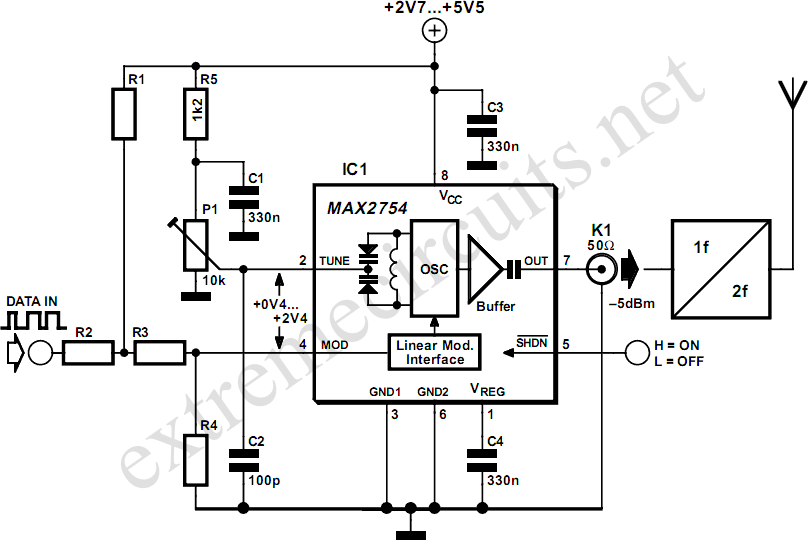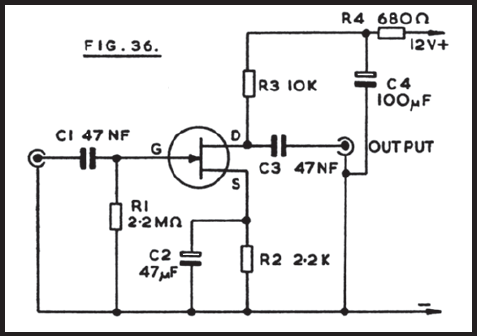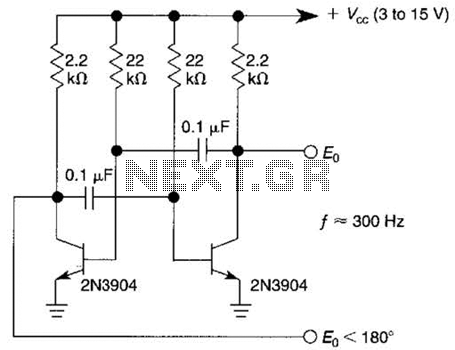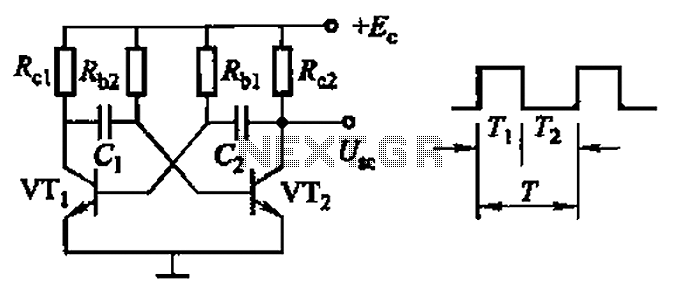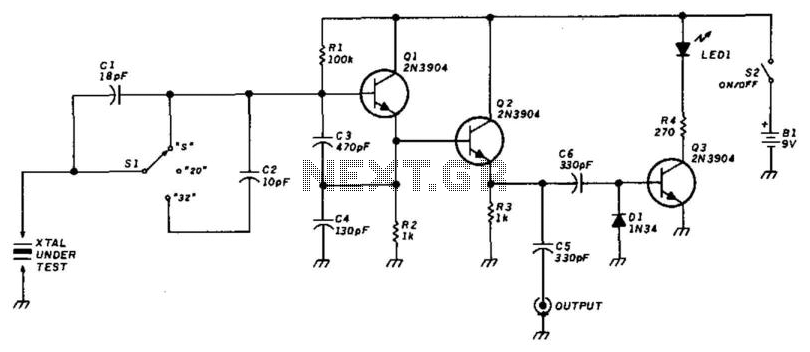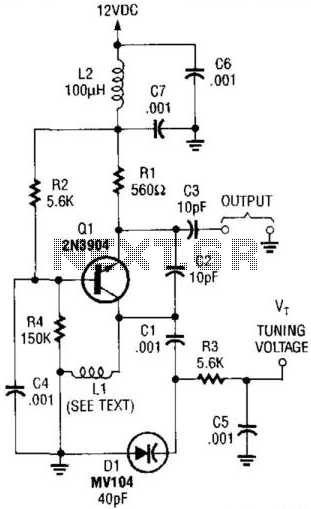
overtone crystal oscillator
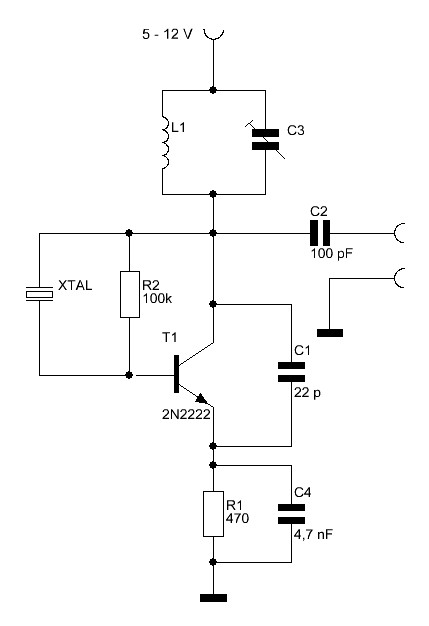
Crystals with higher frequencies than approximately 30 MHz are predominantly overtone crystals. These crystals are designed to operate at an odd multiple of their fundamental frequency. However, they do not resonate at their overtone frequency without assistance; the oscillator circuit must enforce the correct overtone. For a homebrew FM receiver operating in the 2-meter band, channel crystals will be utilized with a first intermediate frequency (IF) of 10.7 MHz. The crystal frequency is defined by the equation: Fxtal = (Freceive - 10.7 MHz) / 3. Initially, a selection of crystals at a frequency of 145.625 MHz was available, which is more commonly used in Europe than in the United States. The specific crystal frequency is 44.975 MHz, and it must be operated in the third overtone mode. When used in a standard oscillator, such as a crystal tester, the crystal tends to resonate at its fundamental frequency rather than the desired third overtone. To achieve the correct frequency, an LC tank circuit can be employed to adjust the crystal oscillator to the targeted frequency. The resonance frequency of the tank circuit should match the intended frequency of the crystal oscillator. While precise frequency matching is not critical, it is essential that the resonance frequency is closer to the overtone frequency than to the fundamental mode frequency or other overtones. A potential solution is to use a series LC tank circuit in conjunction with the crystal, which is compatible with most oscillators that utilize series resonance. This configuration reliably initiates oscillation at the third overtone frequency without issues. Testing of the circuit has been conducted within a temperature range of -20 to +40 degrees Celsius. The 2N2222 transistor is mounted on the underside of the PCB; however, any suitable small-signal transistor, such as a 2N2904 or a BC547, can be utilized in its place. It is noteworthy that any crystal can operate at an overtone frequency; for example, a 20 MHz crystal can be used to directly generate a frequency of 100 MHz. However, it should be noted that due to the mechanical properties of crystals, the actual frequency may deviate slightly when a fundamental crystal is used in overtone mode, although the error is generally minimal. Conversely, the fundamental frequency of an overtone crystal will also exhibit some deviation.
The circuit described involves a crystal oscillator designed to function effectively at the third overtone frequency using a specific LC tank circuit configuration. The overtone crystal, operating at 44.975 MHz, is selected to meet the requirements of the 2-meter band FM receiver. The oscillator circuit must be carefully designed to ensure that the LC tank circuit resonates at the overtone frequency, which is achieved through the equation Fxtal = (Freceive - 10.7 MHz) / 3. This ensures that the crystal operates efficiently and does not default to its fundamental frequency.
The use of a series LC tank circuit is critical in this design. The inductor (L) and capacitor (C) values must be chosen to create a resonant frequency that closely matches the overtone frequency. The formula for the resonant frequency of an LC circuit is given by:
\[ f = \frac{1}{2\pi\sqrt{LC}} \]
By adjusting the values of L and C, the designer can fine-tune the circuit to achieve resonance at the desired frequency. The transistor selection, such as the 2N2222 or alternatives, is important for amplifying the signal and ensuring stable oscillation. The circuit's reliability across a range of temperatures indicates its robustness and suitability for practical applications.
In summary, the design and implementation of this crystal oscillator circuit showcase the intricacies of using overtone crystals in high-frequency applications. The careful selection of components and tuning of the LC tank circuit are essential for achieving the desired performance in the FM receiver. This approach not only provides a functional solution but also highlights the versatility of crystals in various frequency applications.Crystals with higher frequencies than about 30 MHz are almost exclusively overtone crystals. Such a crystal is intended to be used on an odd multiple of it`s fundamental frequency. Unfortunately, the crystal doesn`t want to resonate on it`s overtone frequency voluntarily, the oscillator circuit needs to force the correct overtone. For a little 2m band homebrew FM receiver I intent to use channel crystals and a first IF of 10. 7 MHz. After a while of thinking I determined taht I want the crystal (xtal) frequency to be defined by the following equation: Fxtal = (Freceive - 10. 7 MHz) : 3 For an initial lab test I had a hand full of crystals for the frequency 145. 625 MHz available. This frequency is more commonly used across Europe than here in the US. The crystal frequency is 44. 975 MHz and the crystal needs to be operated in 3rd overtone mode. If such a crystal is used in a regular oscillator, like for instance my crystal tester, the crystal will resonate on it`s fundamental frequency and not the intended third overtone.
A little LC tank circuit can be used to get the crystal oscillator on the designated frequency. The tank circuits resonance frequency needs to be equal to the target frequency of the crystal oscillator. The exact frequency is not very critical as long as the resonance frequency is closer to the intended overtone frequency than to the fundamental mode frequency and other overtones.
One possible approach is a series LC-Tank circuit in series with the crystal. This option works with almost every oscillator where the crystal is being used in series resonance. The oscillator works very reliable and always starts on the third overtone without any difficulties. I tested the circuit between about -20 and +40 degrees Celsius. In case you where wondering where the 2N2222 went, it is mounted on the bottom of the PCB. In place of the 2N2222 one can pretty much use any small signal transistor that is suitable for the target frequency. A 2N2904 or even a BC547 would work as well. One thing that is interesting to know is the fact that any crystal can be operated on an overtone frequency.
A 20 MHz crystal for instance can be used to generate 100 MHz directly. However, I`d like to point out that due to the mechanical properties of a crystal the exact frequency will be slightly off if a fundamental crystal is being operated in overtone mode. The error is fairly small though. The other way around the fundamental frequency of an overtone crystal is a bit off as well. 🔗 External reference
The circuit described involves a crystal oscillator designed to function effectively at the third overtone frequency using a specific LC tank circuit configuration. The overtone crystal, operating at 44.975 MHz, is selected to meet the requirements of the 2-meter band FM receiver. The oscillator circuit must be carefully designed to ensure that the LC tank circuit resonates at the overtone frequency, which is achieved through the equation Fxtal = (Freceive - 10.7 MHz) / 3. This ensures that the crystal operates efficiently and does not default to its fundamental frequency.
The use of a series LC tank circuit is critical in this design. The inductor (L) and capacitor (C) values must be chosen to create a resonant frequency that closely matches the overtone frequency. The formula for the resonant frequency of an LC circuit is given by:
\[ f = \frac{1}{2\pi\sqrt{LC}} \]
By adjusting the values of L and C, the designer can fine-tune the circuit to achieve resonance at the desired frequency. The transistor selection, such as the 2N2222 or alternatives, is important for amplifying the signal and ensuring stable oscillation. The circuit's reliability across a range of temperatures indicates its robustness and suitability for practical applications.
In summary, the design and implementation of this crystal oscillator circuit showcase the intricacies of using overtone crystals in high-frequency applications. The careful selection of components and tuning of the LC tank circuit are essential for achieving the desired performance in the FM receiver. This approach not only provides a functional solution but also highlights the versatility of crystals in various frequency applications.Crystals with higher frequencies than about 30 MHz are almost exclusively overtone crystals. Such a crystal is intended to be used on an odd multiple of it`s fundamental frequency. Unfortunately, the crystal doesn`t want to resonate on it`s overtone frequency voluntarily, the oscillator circuit needs to force the correct overtone. For a little 2m band homebrew FM receiver I intent to use channel crystals and a first IF of 10. 7 MHz. After a while of thinking I determined taht I want the crystal (xtal) frequency to be defined by the following equation: Fxtal = (Freceive - 10. 7 MHz) : 3 For an initial lab test I had a hand full of crystals for the frequency 145. 625 MHz available. This frequency is more commonly used across Europe than here in the US. The crystal frequency is 44. 975 MHz and the crystal needs to be operated in 3rd overtone mode. If such a crystal is used in a regular oscillator, like for instance my crystal tester, the crystal will resonate on it`s fundamental frequency and not the intended third overtone.
A little LC tank circuit can be used to get the crystal oscillator on the designated frequency. The tank circuits resonance frequency needs to be equal to the target frequency of the crystal oscillator. The exact frequency is not very critical as long as the resonance frequency is closer to the intended overtone frequency than to the fundamental mode frequency and other overtones.
One possible approach is a series LC-Tank circuit in series with the crystal. This option works with almost every oscillator where the crystal is being used in series resonance. The oscillator works very reliable and always starts on the third overtone without any difficulties. I tested the circuit between about -20 and +40 degrees Celsius. In case you where wondering where the 2N2222 went, it is mounted on the bottom of the PCB. In place of the 2N2222 one can pretty much use any small signal transistor that is suitable for the target frequency. A 2N2904 or even a BC547 would work as well. One thing that is interesting to know is the fact that any crystal can be operated on an overtone frequency.
A 20 MHz crystal for instance can be used to generate 100 MHz directly. However, I`d like to point out that due to the mechanical properties of a crystal the exact frequency will be slightly off if a fundamental crystal is being operated in overtone mode. The error is fairly small though. The other way around the fundamental frequency of an overtone crystal is a bit off as well. 🔗 External reference
